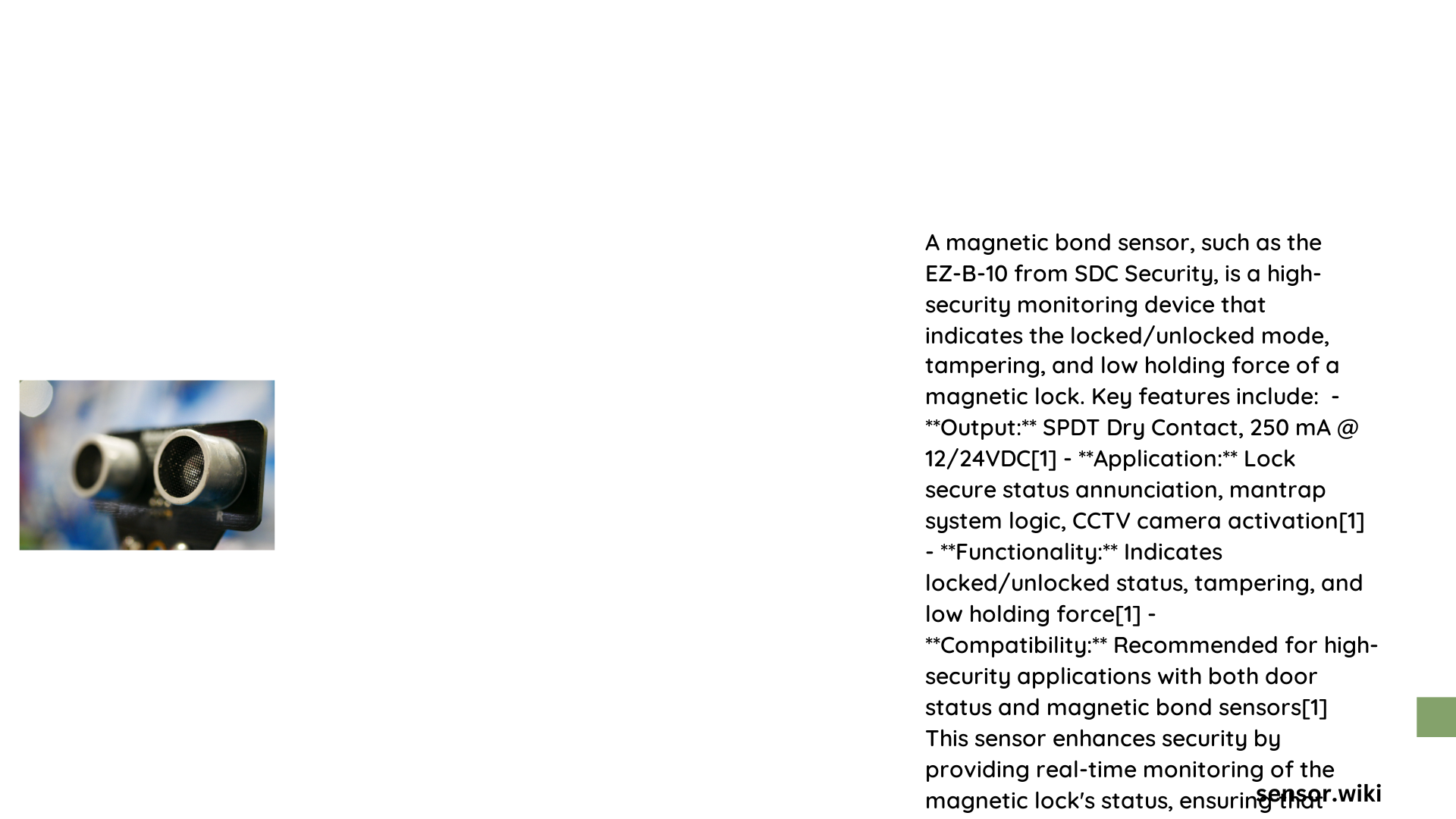Magnetic bond sensors represent sophisticated electromagnetic detection devices designed to monitor magnetic field variations, enabling precise tracking and identification of mechanical states across diverse industrial and security applications. These advanced sensors leverage magnetic field interactions to detect proximity, position, and movement with exceptional accuracy and reliability.
What Are Magnetic Bond Sensors?
Magnetic bond sensors are specialized electronic components that detect changes in magnetic fields to provide critical information about object positioning, movement, and interaction. These sensors convert magnetic field variations into electrical signals, enabling sophisticated monitoring and control mechanisms across multiple domains.
How Do Magnetic Bond Sensors Function?
Magnetic bond sensors operate through several fundamental principles:
- Magnetic Field Detection
- Utilize Hall effect technology
- Sense magnetic field variations
-
Convert magnetic flux into electrical signals
-
Signal Processing
- Amplify weak magnetic signals
- Filter electromagnetic interference
- Generate precise digital or analog outputs
What Are Key Technical Specifications?
| Parameter | Typical Range |
|---|---|
| Operating Temperature | -40°C to 85°C |
| Power Supply | 12/24V DC |
| Current Draw | Up to 250 mA |
| Response Time | Milliseconds |
Where Are Magnetic Bond Sensors Applied?
Magnetic bond sensors find extensive applications across multiple sectors:
- Security Systems
- Door monitoring
- Access control mechanisms
-
Intrusion detection
-
Automotive Industry
- Vehicle door lock verification
- Position sensing
-
Safety mechanism monitoring
-
Manufacturing
- Component alignment detection
- Quality control processes
- Automated assembly verification
What Installation Considerations Exist?
Mounting Techniques
- Mechanical Fastening
- Use precision screws
- Ensure alignment within ±0.5 mm tolerance
-
Verify structural integrity
-
Electrical Connections
- Confirm proper voltage supply
- Shield against electromagnetic interference
- Use appropriate gauge wiring
How to Troubleshoot Magnetic Bond Sensors?
Effective troubleshooting involves:
- Conduct continuity tests
- Verify voltage levels
- Check environmental conditions
- Inspect physical mounting
- Validate signal integrity
What Maintenance Strategies Enhance Performance?
- Perform biannual comprehensive inspections
- Clean sensor surfaces regularly
- Monitor environmental conditions
- Replace sensors showing performance degradation
- Calibrate periodically using specialized equipment
Emerging Trends in Magnetic Bond Sensor Technology
- Miniaturization of sensor components
- Enhanced signal processing algorithms
- Integration with IoT platforms
- Improved temperature compensation
- Higher precision magnetic field detection
Conclusion

Magnetic bond sensors represent a critical technological solution for precise detection and monitoring across complex systems. Their ability to convert magnetic field variations into actionable electrical signals makes them indispensable in modern technological ecosystems.
